Discovery Education
School of Rock
Why do rocks break down over time? Learners explore this concept by simulating physical and chemical weathering of different types of rocks. They use an abrasive to demonstrate physical weathering and acid to demonstrate chemical...
Curated OER
Alaska Rock Garden Project
Young environment experts examine the different types of rocks. They create their own rock garden to keep throughout the school year. Although this lesson is written for the Alaskan landscape, a rock garden can be created in almost any...
Discovery Education
The Time of Our Life
Mammals are some of the newest organisms to appear on Earth. Young scholars complete an activity that results in a timeline showing the appearance of different types of living organisms. Provided with a list that spans from prokaryotes...
Howard Hughes Medical Institute
Color Variation Over Time in Rock Pocket Mouse Populations
Simple characteristic changes can have a significant impact on species survival. A hands-on activity has learners investigate the color variation in pocket mouse populations in different environments. They connect the timing and number...
Royal Society of Chemistry
Weathering and Erosion: Simulating Rock Attack in the Lab
Into each life some rain must fall, but how can that change rocks? Young geologists' understanding of weathering and erosion increases throughout the activities. The lesson includes five short activities to be completed...
Howard Hughes Medical Institute
Molecular Genetics of Color Mutations in Rock Pocket Mice
Can you identify mutations just by viewing DNA sequences? Scholars apply prior knowledge of DNA sequences to do just that in an engaging activity. They transcribe and translate genes, thus identifying the locations of mutations. Then,...
It's About Time
Volcanic History of Your Community
Did you know there are 20 volcanoes erupting at any given time? Pupils look at various igneous rocks, read local geologic maps, and determine if their area has a history of volcanic activity. A reading passage and analysis questions...
Science Matters
Wave Watching
Seismologists use the direction and arrival times of p waves and s waves to determine the distance to the source of an earthquake. The engaging lesson has students line up to form human waves. Through different movements when attached,...
American Museum of Natural History
Create a Coral Reef
Scholars create a diorama to showcase a vibrant coral reef. Six steps walk pupils through setting up the diorama box, crafting four different types of marine life, and putting it all together.
Rainforest Alliance
Knowing the Essential Elements of a Habitat
To gain insight into the many different types of habitats, individuals must first get to know their own. Here, scholars explore their school environment, draw a map, compare and contrast their surroundings to larger ones. They then...
K-State Research and Extensions
The Crusty Earth
Geology rocks — literally! A geology chapter offers eleven activities at four different levels. Scholars enjoy completing hands-on experiments before applying critical thinking skills following a share, process, generalize, apply,...
Howard County Schools
Discounting Tickets
A boss who can't do math? Oh, no! Young entrepreneurs use linear and exponential models to determine which discount will yield the most profit on ticket sales.
DiscoverE
Bridges, Buildings and Beyond Activity Packet: Grades 3-5
The road to a better understanding of engineering lies with bridges and tunnels. A set of four engaging activities teaches learners about engineering concepts related to construction projects. They perform an experiment to find the...
Lisa Staab Shadburn
Play Therapy Activities to Enhance Self‐Esteem
Discover activities to help learners increase self-awareness, build peer and family relations, and develop positive self-esteem. Here you'll find six suggestions for instilling a sense of confidence and self awareness in youngsters. Each...
NorthEast Ohio Geoscience Education Outreach
Hydrology and Landforms
Three days of erosion exploration await your elementary geologists. Learners begin by examining rivers via Google Earth, then they model water flow in sand, and finally, they identify resulting landforms. This lesson is written...
Science Education Resource Center at Carleton College
Serc: Observing,comparing and Classifying Rocks
An activity where students in teams observe and classify different types of rocks.
Read Works
Read Works: Earth Rocks
[Free Registration/Login Required] Students read about three different types of rocks: sedimentary, igneous, and metamorphic. A question sheet is available to help students build skills in classifying and categorizing.
Science Education Resource Center at Carleton College
Serc: Investigations Based on the Rock Cycle
In this lab investigation, students will study different types of rocks and formulate questions about the conditions under which they formed. This lab requires students to use the concepts learned about the rock cycle to develop a...
Other
The Geological Society: Rock Properties [Pdf]
In this activity, students investigate the properties of six different types of rocks, and answer related questions, e.g., ranking them in terms of durability, inferring possible uses of three rock types, etc.
Other
Kentucky Coal Education: Making Sedimentary Rocks [Pdf]
In this activity, students learn how sedimentary rocks form by making three different types.
Other
Prince George's Community College: Reading the Rock Record [Pdf]
This is an in-depth activity where students create a rock layer formation using different colors of playdough and investigate the types of folds and rock formations that might occur. They take core samples through anticlines and...
Read Works
Read Works: Dig This!
[Free Registration/Login Required] Students read different fossils, how fossils are made, and three different types of rock on Earth. A question sheet is available to help students build skills in comparing and contrasting.
Energy4Me
Energy4me: Exploring Sound Waves
This activity explores the behavior of sound waves. Learn how to test how sound travels through different types of rock.
TeachEngineering
Teach Engineering: Engineering for the 3 Little Pigs
The purpose of this activity is to demonstrate the importance of rocks, soils and minerals in engineering and how using the right material for the right job is important. The students build three different sand castles and test them for...



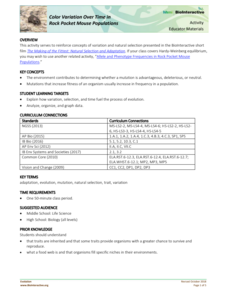
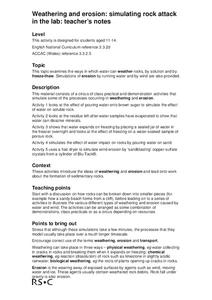






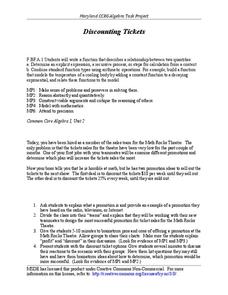


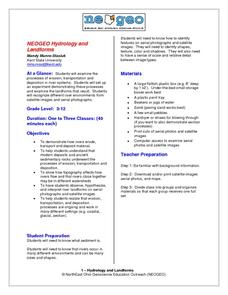

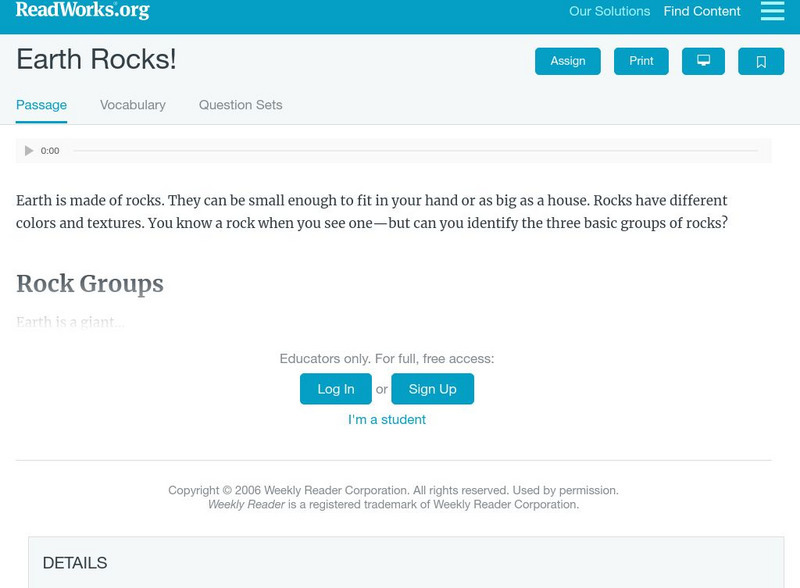
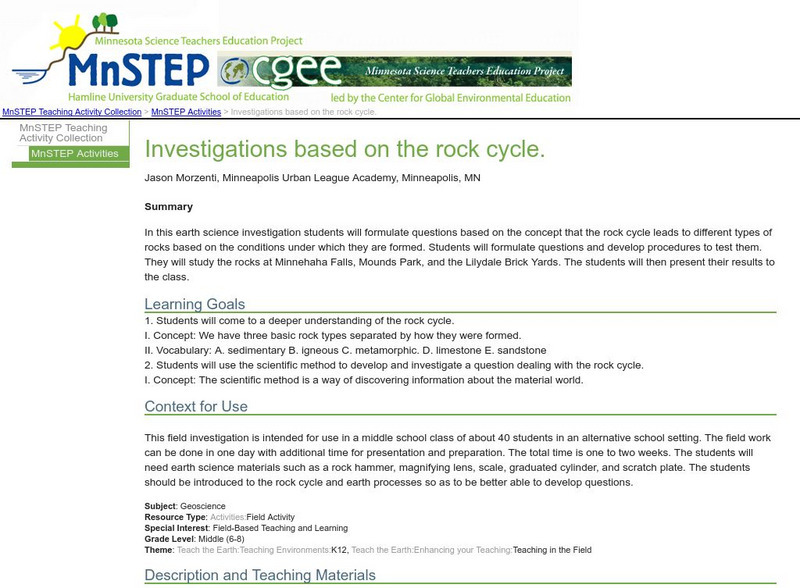
![The Geological Society: Rock Properties [Pdf] Activity The Geological Society: Rock Properties [Pdf] Activity](http://content.lessonplanet.com/resources/thumbnails/410011/large/bwluav9tywdpy2symdiwmduymc0xodk5mi0xawi4ewk4lmpwzw.jpg?1589984684)
![Kentucky Coal Education: Making Sedimentary Rocks [Pdf] Activity Kentucky Coal Education: Making Sedimentary Rocks [Pdf] Activity](http://content.lessonplanet.com/resources/thumbnails/410005/large/bwluav9tywdpy2symdiwmduymc0xotawmi03cdyzni5qcgc.jpg?1589984663)
![Prince George's Community College: Reading the Rock Record [Pdf] Activity Prince George's Community College: Reading the Rock Record [Pdf] Activity](http://content.lessonplanet.com/resources/thumbnails/410006/large/bwluav9tywdpy2symdiwmduymc0xotawms0xn3i0zzvplmpwzw.jpg?1589984663)


